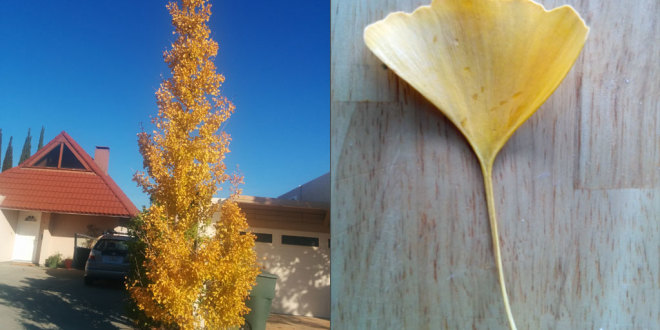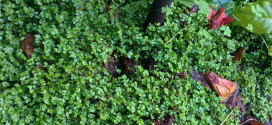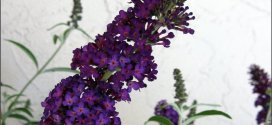Ginkgo is practically pest-free, resistant to storm damage, and casts light to moderate shade. Young trees are often very open but they fill in to form a denser canopy. It makes a durable street tree where there is enough overhead space to accommodate the large size. The City of Sunnyvale has planted them in the median along Sunnyvale-Saratoga Road. The shape is often irregular with a large branch or two seemingly forming its own tree on the trunk. But this does not detract from its usefulness as a city tree unless the tree will be growing in a restricted overhead space. If this is the case, select from the narrow upright cultivars such as `Princeton Sentry’ and `Fairmont’. Ginkgo tolerates most soil, including compacted, and alkaline, and grows slowly to 75 feet (!!!) or more tall. The tree is easily transplanted and has a vivid yellow fall color which is second to none in brilliance, even in the south. However, leaves fall quickly and the fall color show is short.

Gingko Biloba
Whether for city streets or people’s yards, the male trees are preferred. Female trees bear a fruit-like product which, after dropping on a street or driveway, not only emits a foul odor, but is also slippery. You would probably want to clean up the mess, making this specimen high-maintenance. Technically, these messy items are considered nuts, not fruits. But many people refer to them as fruits because they have a fleshy exterior layer. They are about the size of a cherry tomato (see picture). “Autumn Gold” is a popular male cultivar.
The ginkgo is a living fossil, with fossils recognisably related to modern ginkgo from the Permian, dating back 270 million years. The most plausible ancestral group for the order Ginkgoales is the Pteridospermatophyta, also known as the “seed ferns”, specifically the order Peltaspermales.







